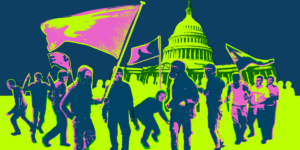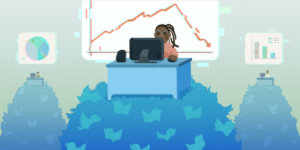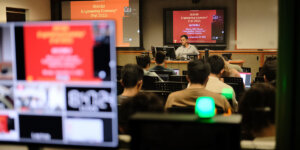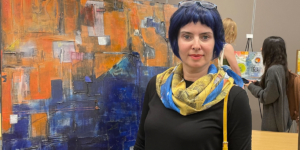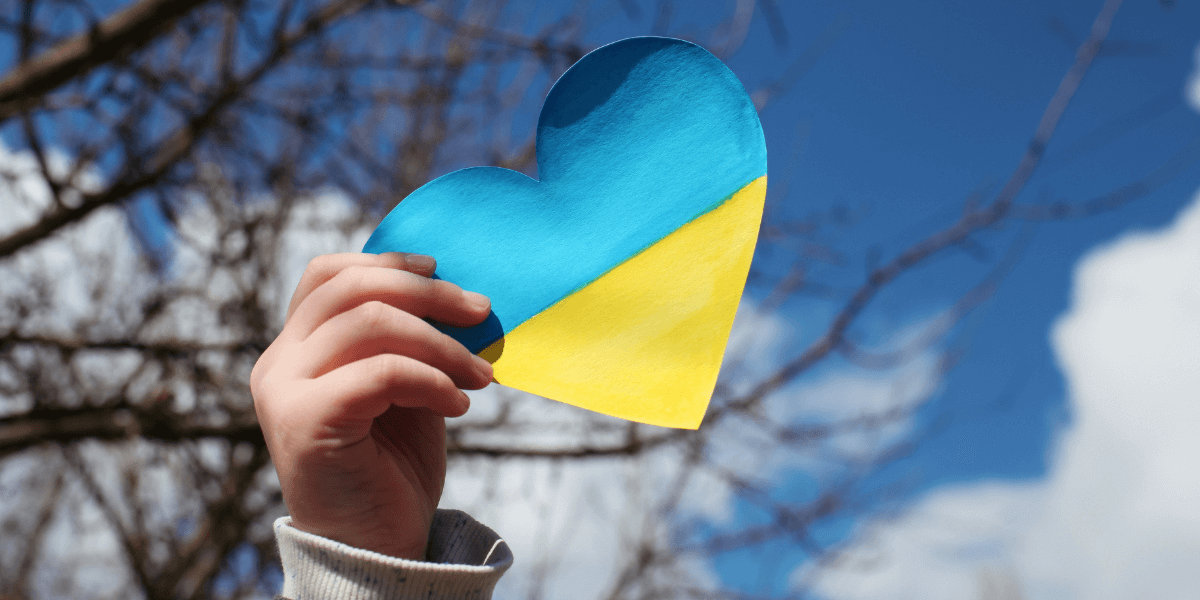
Photo Credit: Kseniia Perminova
When Russian forces began their full-steam invasion of Ukraine in February 2022, it triggered a crisis that resulted in an immediate need for relief and support for millions of people in Ukraine. In a world that relies heavily on social media, it has transformed the way others have supported those in distress during times of conflict.
Little over a year since the beginning of the Russia-Ukraine conflict, social media platforms have been at the forefront of archiving human rights violations, assembling the international community for action, and seeking outside support.
A quartet of researchers at the USC Viterbi School of Engineering’s Information Sciences Institute (ISI) — Luca Luceri, a research scientist; Francesco Pierri, a visiting fellow researcher; Nikhil Jindal, a student researcher; and Jinyi Yi, a graduate student from USC Annenberg — presented a paper on “Online Networks of Support in Distressed Environments: Solidarity and Mobilization during the Russian Invasion of Ukraine” at the 4th workshop on the Data for the Wellbeing for the Most Vulnerable. The workshop encourages researchers to use new sources of data as well as methodologies to study the well-being of vulnerable populations.
Origin of the Idea
Luceri comes from an extensive background and interest in how social influence can impact behavior on web platforms and in real life.
“My research,” said Luceri, “has been centered around malicious behaviors on the web, misinformation, and the use of bots and trolls to push out a certain agenda.”
The Russia-Ukraine conflict, specifically the misinformation and propaganda that Russia was spreading throughout the conflict, is what prompted the idea for the project, along with other researchers at ISI (Pierri, Luceri, Jindal, Ferrara, Web Science 2023).
The aim of the paper examines the online networks of support during the Russia-Ukraine conflict by analyzing four major social media networks – Twitter, Facebook, Instagram, and YouTube. The study was conducted using a large dataset of over 68 million posts that explored patterns and correlations between these platforms and online support websites.
“The idea came to be when I came across some of the propaganda and misinformation that was spread on the web in favor of Russia’s agenda. However, the main idea of this paper was to look at the good side of social media – and how the tremendous support that was received helped the Ukrainian population.”
Research Target
Currently, there are only a few studies to examine how social media has directly supported the most vulnerable populations. This led the researchers to target the gap through measures of posts on social networks that have shown solidarity with those affected and distressed.
“The main target of this research is to observe the relation between social media and online support sites in distressed environments. At the dawn of the conflict in Ukraine, we noticed a surge of social media posts sharing online resources. It was our target to focus on the information ecosystem at large, thus we collected datasets from multiple social networks, which then resulted in a dataset of over 68 million posts.”
The large dataset of over 68 million posts was collected over a three-month period — from February to April 2022 —beginning two days prior to the invasion. Across the dataset, over 19.9 million URLs were inspected across 520K web domains.
“Throughout the three-month period, we were able to collect a good amount of data that supported our idea of social media being a force for social good despite all the misinformation and propaganda that has been circulating.”
Twitter has the highest number of shared URLs – making up 77.10% of all support URLs across all four social media platforms. However, Instagram and YouTube had a higher percentage of support URLs shared – accounting for 2.51% and 1.62% – indicating its potential to serve as a source of support and aid (Ye, J., Jindal, N., Pierri, F., & Luceri, L. 2023).
The top 10 most shared support sites included: Patreon, GoFundMe, Google Docs, UN Refugee Agency, National Bank of Ukraine, the Ukrainian Official Website of the war (war.ukraine.ua), Google Forms, PayPal, Come Back Alive, and the International Committee of the Red Cross.
The impact of social good during times of crisis will continue shaping an avenue for those wanting to support others in times of crisis.
Crowdsourcing and Crowdfunding
Various forms of aid have circulated on social media during the Russia-Ukraine conflict. According to Luceri, the most prevalent forms of social support have been crowdsourcing and crowdfunding.
“Twitter, Facebook, Instagram, and YouTube are the four major social networks that each contributed differently to the spread of support sites based on our research. The links shared on Twitter and Facebook were more evenly distributed across crowdsourcing websites whereas Instagram and YouTube tend to focus more on crowdfunding platforms.”
Although similar in that they both primarily rely on a collective action worked by a large group of individuals, crowdsourcing is the process of sourcing information from individuals; whereas crowdfunding is the process of sourcing funds from individuals.
“Some of the findings regarding crowdsourcing showed that Google Docs and Forms were commonly used among sites for support. Specifically, it was supported through donation sites, petitions, and online information. It created a large-scale collective resource for disaster relief efforts.”
“Crowdfunding gave financial assistance to those who have been affected and are in need. The research showed that Patreon, GoFundMe, and PayPal were the main crowdfunding platforms. It is also interesting to note that crowdfunding provided a direct source of income for independent journalists and news organizations that are at the forefront of the conflict.” Luceri added.
The analysis found that 76.91% (14,552 URLs) of links to crowdfunding websites originated from Patreon, and supported independent journalists and media organizations. Among the four social networks, YouTube was the platform that had the highest proportion of links to crowdfunding websites.
Interesting Findings and Future Work
As digital media continues to play a pivotal part in spreading information and resources, digital assets such as NFTs — a form of digital assets that are collectible and unique — were a surprising avenue when it came to donating funds.
“NFT donations were quite high, which was unexpected and raised a question: were these NFTs given in an attempt for scam manipulation against the people of Ukraine who were in a vulnerable position?”
Said Luceri: “It would be interesting to dig deep and research the entanglement of NFTs and scams. In future work, we will assess the origin of the NFTs and the platforms most used to share them. This research has been focused on the vulnerable population. However, it would be interesting to study the users who are at the forefront of malicious activities, such as scams, and their relationship with vulnerable populations.”
One of the benefits of social media is its ability to increase social good by sharing bite-size information through multiple channels. However, it is worth noting that not all information may be factual which creates another research component of misinformation in support sites.
International AAAI Conference on Web and Social Media (ICWSM)
This research paper was presented at the International AAAI Conference on Web and Social Media (ICWSM), “a forum for researchers from multiple disciplines to come together to share knowledge, discuss ideas, exchange information, and learn about cutting-edge research in diverse fields with the common theme of online social media.”
The 4th workshop of the Data for the Wellbeing for the Most Vulnerable was held on June 5th, 2023.
Published on June 15th, 2023
Last updated on June 15th, 2023




